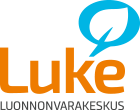Quality factors in egg production
There are four types of egg production in Finland: enriched cages, barn-type, free range and organic hen houses. Beaks are not trimmed in any of the production types, as the hens’ enriched living environment and optimal production conditions prevent any kind of disruptive behaviour. Conventional battery cages were banned in the EU from 2012 onwards and retired from use in Finland.
The quality of eggs is monitored at both farms as self-regulation and at packaging plants. Both egg production farms and packaging plants must prepare a written self-regulation plan that is updated whenever their activities change. In this way, authorities are able to monitor that hygiene standards are followed throughout all stages of the production chain. The cleanliness and porosity of eggs and other outward signs are indicative of production conditions at the farm and egg quality. At the packaging plant, the quality of eggs is assured by means such as imaging, and stamped eggs have always undergone quality control.
Finland’s national Salmonella Control Programme requires all serotypes, or forms, of salmonella to be monitored throughout the production chain, from the import of fodder materials and animals to the manufacture of finished products. The system is one-of-a-kind in the world, as in most countries, salmonella control programmes focus on only a handful of serotypes. The first samples from chicks intended for egg-laying are taken immediately after birth, and a second sample around two weeks before the start of the egg-laying season. Hens may not be transferred to the laying house until the final salmonella sample from chick rearing has been confirmed to be negative. After their transfer, hens are tested for salmonella every 15 weeks throughout their lives. In Finland, salmonella is practically non-existent in poultry. Salmonella control is also required from hobbyists that sell or give out eggs outside their household. In Finland, it is therefore safe to eat even raw eggs.
The spread of infectious animal diseases in combated in Finland by means such as maintaining production hygiene and preventing contact between hens and wild birds or other animals. In addition to regular cleaning and sanitation, production facilities are washed and disinfected carefully between each production batch. Controlling rodents and other pests is also essential for hygiene, as they may infect production facilities with salmonella and other diseases. Another means of ensuring hygiene is a quarantine that prevents the spread of diseases by visitors. Poultry farms employ two-fold disease protection that prevents the spread of pathogens in the hen house through visitors.
Most Finnish hens are healthy, and there are no outbreaks of serious infectious diseases. Egg-laying hens are also rarely medicated and only according to need, as the veterinary care of poultry is primarily based on the prevention of diseases instead of medication. For this reason, there are only a few approved drugs for egg-laying hens, and if medication must be administered, the producer must follow the veterinarian’s instructions and the withdrawal period given for the drug. The spread of diseases is constantly monitored by several authorities, and contingency planning for severe cases of animal disease includes the drafting of action plans in the event of a crisis.
The Finnish Food Authority controls eggs for the presence of contaminants, such as drug ingredients and pesticides. The purpose of food control is to ensure that banned substances are not used in egg production and the residue concentrations of legal substances do not exceed limit values. The use of banned substances has never been observed in egg production in Finland, and samples from eggs are free of even legal drug ingredients. Measured levels of environmental contaminants are also consistently well below the limit values.
Photo in upper edge: Csaba Jansik
